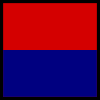
The Royal Regiment of Artillery, commonly referred to as the Royal Artillery (RA) and colloquially known as "The Gunners", is one of two regiments that make up the artillery arm of the British Army. The Royal Regiment of Artillery comprises thirteen Regular Army regiments, the King's Troop Royal Horse Artillery and five Army Reserve regiments.

The Essex Regiment was a line infantry regiment of the British Army in existence from 1881 to 1958. The regiment served in many conflicts such as the Second Boer War and both World War I and World War II, serving with distinction in all three. It was formed in 1881 under the Childers Reforms by the amalgamation of the 44th Regiment of Foot and the 56th Regiment of Foot.

The Royal Horse Artillery (RHA) was formed in 1793 as a distinct arm of the Royal Regiment of Artillery to provide horse artillery support to the cavalry units of the British Army. Although the cavalry link remained part of its defining character, as early as the Battle of Waterloo the RHA was sometimes deployed more along the lines of conventional field artillery, fighting from comparatively fixed positions.

44th Parachute Brigade was a British Army Territorial Army parachute brigade, active from c.1950 to 1978.
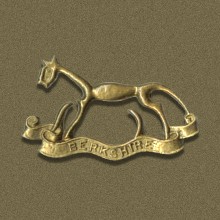
The Berkshire Yeomanry was a part time regiment of the British Army formed in 1794 to counter the threat of invasion during the French Revolutionary Wars. It was the Royal County of Berkshire's senior volunteer unit with over 200 years of voluntary military service. After taking part in the Second Boer War, it saw action as mounted troops in the First World War and as artillery in the Second World War. Its lineage is maintained by 94 Signal Squadron, part of 39 (Skinners) Signal Regiment. The Headquarters of the Squadron is based in Windsor, Berkshire. The Berkshire Yeomanry had a number of battle honours won from Europe to the Far East and Private Frederick Potts was awarded a Victoria Cross for service during the Gallipoli Campaign.

562 Parachute Squadron Royal Corps of Transport (Volunteers) was a minor unit that supported 44th Parachute Brigade (V).
7th Parachute Regiment, Royal Horse Artillery is a regiment of the Royal Artillery in the British Army. It currently serves in the field artillery role with 16 Air Assault Brigade Combat Team, and is equipped with the L118 Light Gun.

The Queen's Own Worcestershire Hussars was a Yeomanry regiment of the British Army. First raised in 1794, it participated in the Second Boer War and World War I as horsed cavalry before being converted to an anti-tank regiment of the Royal Artillery for service in World War II. In 1956 it was amalgamated with the Warwickshire Yeomanry to form the Queen's Own Warwickshire and Worcestershire Yeomanry. The lineage is maintained by B Squadron, part of The Royal Yeomanry.

The South Nottinghamshire Hussars is a unit of the British Army formed as volunteer cavalry in 1794. Converted to artillery in 1922, it presently forms part of 103 Regiment, Royal Artillery.
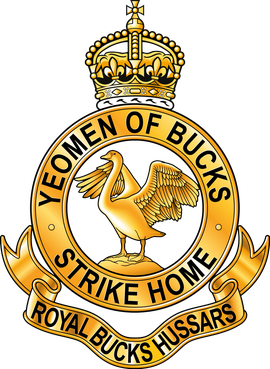
The Royal Buckinghamshire Yeomanry is an Operational Hygiene Squadron of the Royal Logistic Corps, originally formed as cavalry in 1794, and has also served in artillery and signals roles. The lineage is continued by 710 Operational Hygiene Squadron, Royal Logistic Corps.
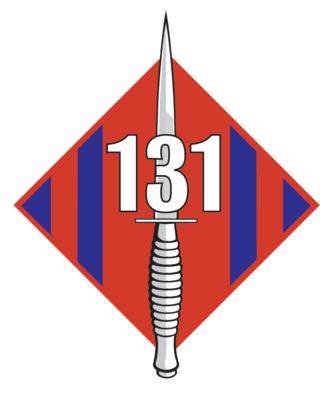
131 Commando Squadron Royal Engineers is an Army Reserve unit and part of 24 Commando Regiment Royal Engineers. It provides engineering support to 3 Commando Brigade Royal Marines and is the largest Army Reserve Commando unit. The squadron has deployed worldwide to provide combat engineer support to 3 Cdo Bde RM, often deploying in small sub-units. 131 was first raised in 1947 as an airborne engineer regiment, and reached a strength of over 1,000 trained parachute engineers by the early 1960s. Between 1 April 1978 and 1 October 2015, the unit was an independent Commando squadron under operational command of HQ 3 Cdo Bde RM. On 2 October 2015, it formally became the third squadron of 24 Commando Engineer Regiment.

The 15th Parachute Battalion was an airborne infantry battalion of the Parachute Regiment, originally raised as 15th (King's) Parachute Battalion by the British Army in World War II.
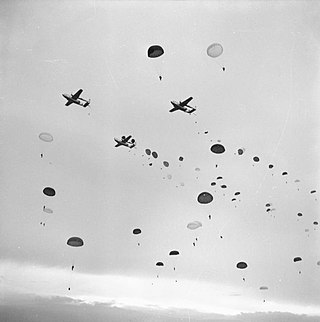
The 16th Airborne Division was an airborne infantry division of the British Territorial Army. It was first commanded by Major-General Roy Urquhart, and had its divisional headquarters in London.

The 1st London Artillery Brigade or City of London Artillery was a volunteer field artillery unit of the British Army, part of the Territorial Force and later the Territorial Army, that existed under various titles from 1863 to 1971 and fought in World War I and World War II.
The Shropshire Royal Horse Artillery was a Territorial Force Royal Horse Artillery battery that was formed in Shropshire in 1908 from the Shropshire Battery of the 1st Shropshire and Staffordshire Artillery Volunteers, Royal Garrison Artillery of the Volunteer Force. It saw active service during the First World War on the Western Front in 1917 and 1918 as part of an Army Field Artillery Brigade. A second line battery, 2/1st Shropshire RHA, also served on the Western Front in 1917 and 1918 as part of another Army Field Artillery Brigade. It was reconstituted post-war as a medium artillery battery and served as such in the Second World War.

The Nottinghamshire Royal Horse Artillery was a Territorial Force Royal Horse Artillery battery that was formed in Nottinghamshire in 1908. It saw active service during the First World War in the Middle East – in the Senussi Campaign and the Sinai and Palestine Campaign – from 1915 to 1918. A second line battery, 2/1st Nottinghamshire RHA, served in the Mesopotamian Campaign in 1917 and 1918 as a Field Artillery battery. Post-war, it was reconstituted as a Royal Field Artillery battery.
The Kent Cyclist Battalion was a bicycle infantry battalion of the Territorial Force, part of the British Army. Formed in 1908, it was sent to India in the First World War and saw active service during the Third Anglo-Afghan War in 1919. In 1920, it was converted as part of the Royal Artillery.
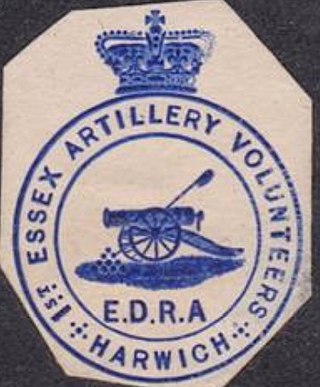
The 1st Essex Artillery Volunteers was a unit of Britain's part-time auxiliary forces raised in Essex in 1860 in response to an invasion scare. It served under various designations as field artillery in Palestine during World War I. During World War II its units served as mountain artillery in Italy and as jungle artillery and medium artillery in Burma. Postwar it became an airborne unit until it was merged with other units in the 1950s.

The 100th (Yeomanry) Regiment, Royal Artillery, formerly the National Reserve Headquarters, Royal Artillery is an Army Reserve administrative group of the Royal Artillery which oversees the recruitment and maintaining of specialist reserve units and personnel.

299 Parachute Squadron, Royal Engineers is a specialist field engineer squadron of the British Army's Corps of Royal Engineers and the only reserve parachute unit of the corps. Formed in 1947 as an airborne field squadron, 299 Para Sqn would see many reorganisations and new roles, until 2006 when it took on the parachute role it maintains today. As of 2021, it is the only reserve parachute-trained squadron of the Royal Engineers.
